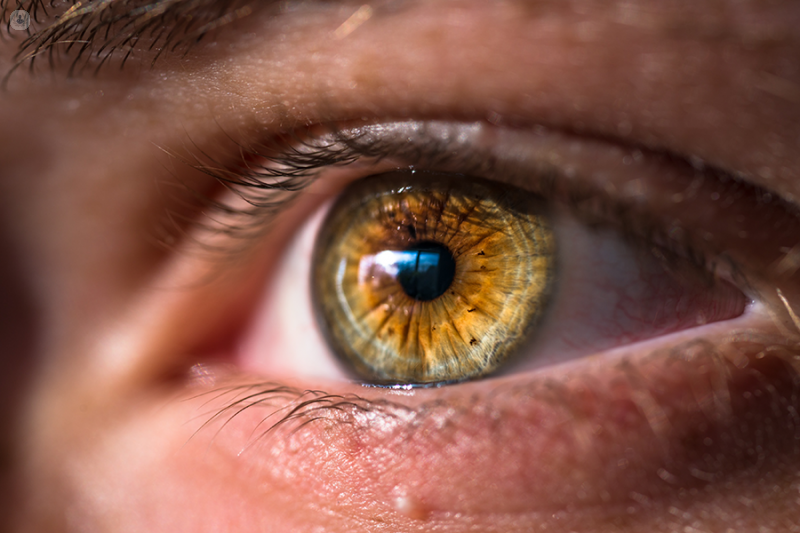When considering vision correction options, many people wonder not only about immediate results but also about how their choice will affect their eyesight and quality of life in the years and decades to come. Implantable Contact Lenses (ICLs) are rapidly gaining popularity not just for their quick and effective vision correction but for the significant long-term benefits they offer.
Let’s dive deep into the key long-term advantages of ICLs that make them a standout choice for many patients.
1. Durable Vision Correction That Lasts Decades
ICLs are designed to provide stable, long-lasting correction of nearsightedness, farsightedness, and astigmatism. Because the lenses are implanted inside the eye, they remain in a fixed, stable position, providing consistent optical performance over many years.
- Unlike glasses or external contacts, which require frequent prescription updates, ICLs often maintain excellent visual correction for 10-20 years or more.
- Regular eye exams are still important, but most patients experience minimal vision fluctuation after the initial healing period.
2. Preservation of Natural Eye Anatomy
One of the greatest long-term benefits of ICLs is that they do not alter or remove any part of the eye’s natural anatomy, especially the cornea.
- Unlike LASIK, which permanently reshapes the cornea by removing tissue, ICLs work in harmony with your eye’s natural structures.
- This means your eye’s integrity and biomechanical strength are preserved, reducing the risk of complications such as corneal ectasia (a progressive thinning and bulging of the cornea).
3. Reversible and Upgradeable
ICLs are removable and replaceable, offering flexibility unmatched by laser eye surgeries.
- If your prescription changes or eye health conditions develop (such as cataracts), the ICL can be taken out or exchanged for a different lens.
- This reversibility ensures that you’re not locked into a permanent alteration — a reassuring long-term benefit as your eyes age.
4. Maintains Corneal Health and Tear Film
Because ICLs sit behind the iris and in front of the natural lens, they do not interfere with the cornea or tear film.
- This helps preserve the health of the corneal surface and reduces the risk of dry eye syndrome, a common long-term complaint after LASIK.
- Patients often experience better eye comfort over the years compared to those who wear external contact lenses or have laser reshaping.
5. Built-In UV Protection for Retinal Health
Many ICLs incorporate UV-blocking technology into the lens material (Collamer), which helps protect the retina from harmful ultraviolet radiation.
- Long-term UV exposure is a risk factor for macular degeneration and other retinal diseases.
- The added UV protection inside the eye offers peace of mind and better protection than glasses or contacts alone.
6. Reduced Risk of Age-Related Vision Decline
While ICLs correct refractive errors, they do not interfere with natural changes related to aging, such as presbyopia (age-related difficulty focusing on close objects).
- As you age, your natural lens will still function normally, and your doctor can recommend complementary treatments for presbyopia when needed.
- This natural coexistence allows for a more tailored approach to managing vision through life stages.
7. Minimal Long-Term Complications When Properly Managed
Extensive studies show that, when implanted by experienced surgeons, ICLs have an excellent safety profile with low rates of complications over the long term.
- Rare issues like cataract development or increased eye pressure can be monitored and managed with regular eye exams.
- Most patients enjoy stable vision without needing additional surgical interventions.
8. Enhanced Quality of Life
Long-term, patients report significant improvements in their quality of life after ICL surgery.
- Freedom from glasses and daily contact lens care means more convenience, confidence, and comfort.
- Many return to activities like sports, swimming, or outdoor work without worrying about eyewear.
9. Cost-Effective Over Time
Although the upfront cost of ICL surgery is higher than buying glasses or contact lenses initially, the long-term savings can be significant.
- You avoid ongoing expenses for glasses, contact lens solutions, and replacement lenses.
- The durability and stability of ICLs mean fewer vision-related expenses down the road.
10. Compatible with Future Eye Care Advances
Because ICLs do not alter the cornea or natural lens, they are compatible with future eye care advances.
- For example, if new treatments emerge for cataracts or presbyopia, ICL patients can often undergo these procedures without complications.
- This makes ICL a forward-thinking choice in a rapidly evolving field of ophthalmology.
Summary
Implantable Contact Lenses offer numerous long-term benefits that go beyond clear vision:
- Durable and stable vision correction
- Preservation of natural eye anatomy
- Reversible and upgradeable options
- Better eye comfort and reduced dry eye risk
- Built-in UV protection
- Compatibility with future eye treatments
- Enhanced quality of life and cost-effectiveness
If you are considering a permanent, safe, and flexible solution to your vision problems, ICLs are an excellent choice that combines the best of modern science with long-term eye health.When considering vision correction options, many people wonder not only about immediate results but also about how their choice will affect their eyesight and quality of life in the years and decades to come. Implantable Contact Lenses (ICLs) are rapidly gaining popularity not just for their quick and effective vision correction but for the significant long-term benefits they offer.
Let’s dive deep into the key long-term advantages of ICLs that make them a standout choice for many patients.
1. Durable Vision Correction That Lasts Decades
ICLs are designed to provide stable, long-lasting correction of nearsightedness, farsightedness, and astigmatism. Because the lenses are implanted inside the eye, they remain in a fixed, stable position, providing consistent optical performance over many years.
- Unlike glasses or external contacts, which require frequent prescription updates, ICLs often maintain excellent visual correction for 10-20 years or more.
- Regular eye exams are still important, but most patients experience minimal vision fluctuation after the initial healing period.
2. Preservation of Natural Eye Anatomy
One of the greatest long-term benefits of ICLs is that they do not alter or remove any part of the eye’s natural anatomy, especially the cornea.
- Unlike LASIK, which permanently reshapes the cornea by removing tissue, ICLs work in harmony with your eye’s natural structures.
- This means your eye’s integrity and biomechanical strength are preserved, reducing the risk of complications such as corneal ectasia (a progressive thinning and bulging of the cornea).
3. Reversible and Upgradeable
ICLs are removable and replaceable, offering flexibility unmatched by laser eye surgeries.
- If your prescription changes or eye health conditions develop (such as cataracts), the ICL can be taken out or exchanged for a different lens.
- This reversibility ensures that you’re not locked into a permanent alteration — a reassuring long-term benefit as your eyes age.
4. Maintains Corneal Health and Tear Film
Because ICLs sit behind the iris and in front of the natural lens, they do not interfere with the cornea or tear film.
- This helps preserve the health of the corneal surface and reduces the risk of dry eye syndrome, a common long-term complaint after LASIK.
- Patients often experience better eye comfort over the years compared to those who wear external contact lenses or have laser reshaping.
5. Built-In UV Protection for Retinal Health
Many ICLs incorporate UV-blocking technology into the lens material (Collamer), which helps protect the retina from harmful ultraviolet radiation.
- Long-term UV exposure is a risk factor for macular degeneration and other retinal diseases.
- The added UV protection inside the eye offers peace of mind and better protection than glasses or contacts alone.
6. Reduced Risk of Age-Related Vision Decline
While ICLs correct refractive errors, they do not interfere with natural changes related to aging, such as presbyopia (age-related difficulty focusing on close objects).
- As you age, your natural lens will still function normally, and your doctor can recommend complementary treatments for presbyopia when needed.
- This natural coexistence allows for a more tailored approach to managing vision through life stages.
7. Minimal Long-Term Complications When Properly Managed
Extensive studies show that, when implanted by experienced surgeons, ICLs have an excellent safety profile with low rates of complications over the long term.
- Rare issues like cataract development or increased eye pressure can be monitored and managed with regular eye exams.
- Most patients enjoy stable vision without needing additional surgical interventions.
8. Enhanced Quality of Life
Long-term, patients report significant improvements in their quality of life after ICL surgery.
- Freedom from glasses and daily contact lens care means more convenience, confidence, and comfort.
- Many return to activities like sports, swimming, or outdoor work without worrying about eyewear.
9. Cost-Effective Over Time
Although the upfront cost of ICL surgery is higher than buying glasses or contact lenses initially, the long-term savings can be significant.
- You avoid ongoing expenses for glasses, contact lens solutions, and replacement lenses.
- The durability and stability of ICLs mean fewer vision-related expenses down the road.
10. Compatible with Future Eye Care Advances
Because ICLs do not alter the cornea or natural lens, they are compatible with future eye care advances.
- For example, if new treatments emerge for cataracts or presbyopia, ICL patients can often undergo these procedures without complications.
- This makes ICL a forward-thinking choice in a rapidly evolving field of ophthalmology.
Summary
Implantable Contact Lenses offer numerous long-term benefits that go beyond clear vision:
- Durable and stable vision correction
- Preservation of natural eye anatomy
- Reversible and upgradeable options
- Better eye comfort and reduced dry eye risk
- Built-in UV protection
- Compatibility with future eye treatments
- Enhanced quality of life and cost-effectiveness
If you are considering a permanent, safe, and flexible solution to your vision problems, ICLs are an excellent choice that combines the best of modern science with long-term eye health.




